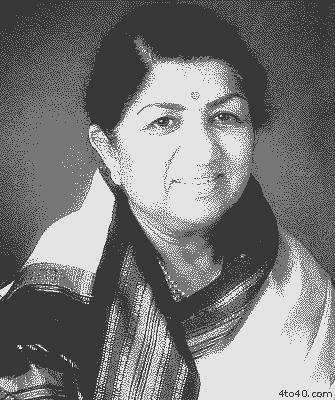 Lata’s name has come in the Guinness Book of Records as the singer of the highest number of songs. She has already sung over 30,000 songs in a variety of languages.
Lata’s name has come in the Guinness Book of Records as the singer of the highest number of songs. She has already sung over 30,000 songs in a variety of languages.
She is recipient of many awards and honours both within the country and abroad. The Government of India has conferred on her the title of ‘Padma Shri’. The Government of Madhya Pradesh has instituted an annual award of ₹ 1 Lakh in her name. She has also received the prestigious ‘Filmfare Award’ for best singer many times. ‘Dadasaheb Phalke Award’ was conferred upon her in the year 1989 and ‘Rajiv Gandhi Sadhbhavana Award’ in 1997. Her hit songs of the films Anarkali, Mughul-E-Azam, Bees Saal Baad, Amar Prem, Mehbooba, Sangam, Jurmana, Arpan, Ek Duje Ke Liya, Ram Teri Ganga Maili etc. are worth mentioning. The songs sung by Lata in the films ‘1942- a Love Story, Dilwale Dulhanya Le Jayenge, Dil To Pagal Hai etc’, have become enormously popular and shows that Lata’s voice has improved further in spite of her age.
Biography
Lata Mangeshkar (born September 28, 1929) is a singer from India. Focusing mainly on Hindi and Marathi film music, she is one of the world’s foremost Indian vocalists. She has sung in over twenty major Indian languages and has been deemed the Nightingale of India, an epithet also used for Sarojini Naidu and M. S. Subbulakshmi.
Childhood
Mangeshkar was born in Indore, Madhya Pradesh to classical singer and theatre actor Dinanath Mangeshkar and his second wife Shudhmati Mangeshkar. The Mangeshkars were a middle-class Maharashtrian family, and were Saraswat Brahmins by caste. Lata was the firstborn child, to be followed by siblings Hridayanath Mangeshkar, Asha Bhosle, Usha Mangeshkar and Meena Mangeshkar.
Raised in Maharashtra, at the age of 5 Mangeshkar started working as an actress in several plays known as “sangeet nataks” in which her father was performing. Her father also started giving her singing lessons. Dinanath’s recitals and lessons left a strong impression on his daughter, as did the music of K. L. Saigal, who was her father’s favorite singer and her idol.
1940s
Mangeshkar’s first cinematic song was for the Marathi film Kiti Hasaal (1942), produced by Vasant Joglekar. However, her father disliked the idea of any of his daughters singing for movies, so the song was dropped from the film.
In 1942, Mangeshkar’s father died of heart disease. Due to the death of her father and the resultant financial distress, Lata played cameo roles in many Hindi and Marathi films, despite not personally enjoying acting. Her first cameo was in Pahili Mangalagaur (1942), where she played the younger sister to actress Snehprabha Pradhan. Mangeshkar went on to perform in other feature films including Maaze Baal, Jeevan Yatra (1946), and Chhatrapati Shivaji (1952). In Badi Maa, she acted with Noor Jehan and her younger sister, Asha. Not only did she sing for herself, but she also sang playback for Asha.
In 1945, composer Ghulam Haider took Mangeshkar to meet producer S. Mukherji, who was planning to make a movie starring actress Kamini Kaushal. Haider wanted the producer to give the then sixteen-year-old Lata a chance to sing. Mukherji dismissed her voice, much to the annoyance of Haider. He prophesied: “Let me foretell today that this girl will soon put to shame everyone else, including Noor Jehan. Producers and directors will fall at her feet, begging her to sing in their films.”
In 1947, Vasant Joglekar called again, employing her to sing in his film, Aapki Seva Mein. The songs composed by Datta Daavjekar such as “Paa Laagoon Kar Jodi Re” (a thumri in Raga Peelu) helped establish Mangeshkar as a playback singer in Bollywood. The film Majboor also provided Lata with hits such as “Angrezi Chhora Chala Gaya,” “Dil Mera Toda Haaye,” and “Mujhe Kahin Ka Na Chhoda Tere Pyar Ke.”
In 1949, Mangeshakar got her big break with the song “Aayega Aanewala” from the film Mahal. The song was composed by Aayega Aanewala and picturized on Bollywood starlet Madhubala. “Aayega Aanewala” was a big hit, and a major turning point for the careers of both Mangeshkar and Madhubala. The same year, actor / director / producer Raj Kapoor began his ascent to stardom with his film Barsaat. Mangeshkar built on her success by recording several hit songs for the composer duo Shankar Jaikishan, including “Jiya Beqarar Hai” and “Chhod Gaye Balam.”
Also in 1949, Lata lent her voice to the enormously popular song “Lara Lappa Lara Lappa” from the film Ek Thi Ladki, composed by Vinod. The song was such a hit that the actress that the song was picturized on, Meena Shorey, became known as the “Lara Lappa Lara Lappa” girl. She also rendered songs for such composers as Husnalal Bhagatram and Anil Biswas in this period as well.
1950s
The 1950s saw Mangeshkar soar to the top of the heap of Bollywood singers. She recorded songs for all the major composers of the period, including Shankar Jaikishan, Naushad, S D Burman, C. Ramchandra, Hemant Kumar, and Salil Chowdhury.
Shankar Jaikishan used Lata as their female singer in all the movies they scored, mainly for Raj Kapoor. These movies include Aag, Aah (1953), Shree 420 (1955), and Chori Chori (1956). Some famous Lata tunes from these movies include “Mera Ang Ang Muskaya” (from Aah), “Ichak Dana Bichak Dana” (from Shree 420), and “Panchhi Banoon Udti Phiroon” (from Chori Chori).
Lata also became the main female singer for Naushad during the 1950s, beginning with Baiju Bawra (1952). Naushad’s tunes were all classical raga-based compositions, and Mangeshkar turned out hits such as “Mohe Bhool Gaye Sanwariya” and “Bachpan Ki Mohabbat Ko” for Baiju Bawra.
S.D. Burman used Lata as his female singer for hit songs such as “Tum Na Jaane Kis Jahan Mein Kho Gaye” from Sazaa (1951), “Phaili Hui Hai Sapnon Ki Baahen” from House No. 44 (1955), and “Ab Aage Teri Marzi” from Devdas (1955). In 1957, however, Mangeshkar and Burman had a major falling-out, and Lata refused to record for him again until 1962. During this time, Burman groomed Asha Bhosle, Lata’s younger sister, as his main female voice, and also utilized Geeta Dutt as well.
It was also during the 1950s that Lata formed her association with one of her absolute favourite composers, Salil Chowdhury. In 1953, Mangeshkar recorded “Aa Ri Aa Nindiya” from Do Bigha Zameen for “Salilda.” 1958 saw the release of the Bimal Roy-directed blockbuster Madhumati, starring Dilip Kumar and Vyjayantimala. Chowdhury provided the music for the film, and “Aaja Re Pardesi” stands as one of Lata’s most famous songs. It netted her her first Filmfare Award for Best Female Playback Singer.
1960s
The 1950s saw Mangeshkar make her case to enter the upper echelons of Bollywood music. However, it was the 1960s that saw Lata become the undisputed queen of Bollywood playback singing. She recorded songs for nearly every major composer in the industry, many of which became all-time hits.
1960 saw Lata render numerous hits for various music directors. She teamed up with Naushad to produce “Pyar Kiya To Darna Kya” for the lavish Mughal-era romance Mughal-E-Azam, perhaps the most popular song from that film. She also recorded several duets with Mohammad Rafi under Naushad’s baton for Kohinoor, including the timeless “Do Sitaron Ka Zameen Par.” For Shankar Jaikishan, she rendered the Hawaiian-themed number “Ajeeb Dastaan Hai Yeh” from Dil Apna Aur Preet Parai, picturized on Bollywood’s tragedy queen, Meena Kumari. Finally, her partnership with Salil Chowdhury continued to bear fruit in the classical-tinged “O Sajana Barkha Bahaar” from Parakh.
In 1961, Mangeshkar took the first step on the road to reconciliation with S D Burman, as she recorded a bhajan, “Allah Tero Naam,” for Burman’s assistant, Jaidev. One of Lata’s finest devotional pieces, it is said to have awakened eminent classical vocalist Pandit Jasraj from his sleep, with tears streaming down his cheeks.
1962 saw Lata record perhaps her most famous song, a patriotic song – “Ae Mere Watan Ke Logon” that was composed by C. Ramchandra and had its lyrics written by Pradeep. A moving tribute to Indian soldiers who fell in the Sino-Indian War, the song is said to have moved the then Prime Minister, Jawaharlal Nehru, to tears when sang at the Indian Parliament. That year, she bagged her second Filmfare Award for Best Female Playback Singer for the haunting “Kahin Deep Jale, Kahin Dil” from the movie Bees Saal Baad, composed by Hemant Kumar.
In 1963, Mangeshkar returned to collaboration with S.D. Burman, mainly as a result of a truce brokered by Burman’s son, budding Bollywood composer (and future brother-in-law) R.D. Burman. The sugary sweet “Mora Gora Ang Lai Le” picturized on Nutan was a huge hit from the movie Bandini, directed by Bimal Roy. In 1965, she produced some more hits under Burman’s direction for Guide, including “Aaj Phir Jeene Ki Tamanna Hai” and “Gaata Rahe Mera Dil” (the latter a duet with Kishore Kumar).
Along with Salil Chowdhury, Madan Mohan was another of Mangeshkar’s favourite composers. Madan Mohan created the ghazal “Aap Ki Nazron Ne Samjha” from Anpadh in 1962; the pair would produce many other memorable songs over the years. 1964 in particular saw the release of Raj Khosla’s Woh Kaun Thi?, which featured music by Madan Mohan. “Naina Barse Rim Jhim” was a haunting yet emotional number from this movie which also garnered huge popularity.
The 1960s also witnessed the beginning of Mangeshkar’s relationship with Laxmikant-Pyarelal, the duo for which she would sing the most songs in her career. She recorded for them in their first Bollywood film, Parasmani, in 1963, and continued to work with them in films such as Dosti (1964), Farz (1967), and Milan (1967), continuing on into the 1970s.
1970s
Mangeshkar performed tracks for star Meena Kumari, again, this time in the film Pakeezah (1971), with music by Ghulam Mohammed.
S.D. Burman’s final films were in the 1970s, before falling into a coma and dying in 1975. Lata performed in the films Prem Pujari, Sharmilee (1971), and Abhimaan (1973). In Abhimaan she performed vocals at the age of 44, for 25-year-old actress Jaya Bachchan.
Teaming up once more with Salil Chowdhury she performed in the film Annadata (1971) and the title song of Chhoti Si Baat (1974). She also released an album of Meera bhajans composed by her brother. The album was titled “Chala Vaahi Des”. Some of the bhajans in the album include “saanware rang raachi” and “ud jaa re kaaga”.
Continuing their relationship from the 60’s into the 70’s, Lata and Laxmi-Pyare were together again (with Rahul Dev Burman in the mix). Writers Anand Bakshi and Majrooh Sultanpuri wrote most of the tracks, penning songs for the films Amar Prem (1971), Caravan (1971), and Raj Kapoor’s Satyam Shivam Sundaram (1978). Mangeshkar and Kishore Kumar performed songs for R D Burman and lyricist Gulzar in the film Aandhi in 1975. R D Burman also effectively tapped the melody in Lata’s throat in the songs of the wonderful film Kinara, famous for “Naam gum jaayega” and “abke na saawan barse”.
Mangeshkar performed in 1976 for composer Khayyam and songwriter Sahi Ludhiyanvi for the film Kabhi Kabhie, and again with Khayyam in Shankar Hussain in 1977 and “Chambal ki Kasam” in 1979. She also sang for Naushad in “Chambal ki Raani”.
1980s
In 1980s, Lata voluntarily cut down on her singing to allow new younger talent to come up. In 1983, Lata once again worked with Khayyam for the movie Razia Sultan, singing the song Aye dil-e-naadaan.
Ravindra Jain, the blind composer who was given a big break by Raj Kapoor in Ram Teri Ganga Maili, got Lata to sing popular songs like Sun Sahiba Sun.
Ramlaxman was another new composer who worked with Lata in many Rajshri Production movies, including Maine Pyar Kiya, Hum Aapke Hain Kaun and Hum Saath-Saath Hain. Maine Pyaar Kiya (1989) was Salman Khan’s second film and set a record of sorts. The songs sung by Lata and S. P. Balasubrahmanyam became popular – Dil Deewana, Kabootar ja ja, Aaja shaam hone aai and the title song.
In late 1970s and early 1980s, Lata worked with the children of composers she had earlier worked with. Apart from Sachin and Rahul Dev Burman, Lata worked has worked with Chitragupta and his sons Anand-Milind, Roshan and his son Rajesh Roshan, and Sardar Malik and his son Anu Mallik. Rajesh Roshan’s first film Julie had some numbers sung by Lata, including Bhool gaya sab kuchh (duet with Kishore Kumar) and Yeh Raatein Nai Puraani.
1990s
In 1990, Lata launched her own production house. Her first (and the only) movie as a producer Lekin — flopped, but the music (composed by her brother, Hridaynath) was well-appreciated. The song Yaara seeli seeli, written by Gulzar, is considered to be one of the best songs that Lata has ever sung.
In 1990s, Lata also recorded many non-film songs, including ghazals with Jagjit Singh. One such ghazal is Dhuan banake fiza mein, recorded in 1992. The songs that Lata recorded for Ramlaxman in the Rajashri Productions film Hum Aapke Hain Kaun were hits. Lata also sang for all of the Yash Chopra films, including Lamhe, Darr, Yeh Dillagi, Dilwale Dulhaniya Le Jayenge and Dil To Pagal Hai.
A.R. Rahman has recorded a number of songs with Lata, including Jiya Jale (from Dil Se, danced by Preity Zinta), Khamoshiyan Gungunane Lagin (from One Two ka Four), and “O Paalanhaare” (from Oscar nominated film Lagaan).
She has also sung for different successful films like 1942: A Love Story, Karan Arjun, Dushman and Jab Pyaar Kisise Hota Hai
2000s
Lata has continued to perform in later years. She sings some of her old songs on the Mujhse Dosti Karoge! soundtrack, alongwith two new numbers Jaane dil mein kab se hai tu (with Sonu Nigam) and Andekhi anjaani si (with Udit Narayan). A more recent example is in the film Veer Zaara – Tere Liye with Roopkumar Rathod, with songs composed by late Madan Mohan. She has also sung a few songs for movies like Zubeidaa, Lagaan, Page 3, Mohabbatein, Kabhi Khushi Kabhie Gham, Bewafaa, Lucky: No Time for Love and Rang De Basanti.
In 2001, Mangeshkar was rewarded with India’s highest civilian honor, the Bharat Ratna.
Awards and Recognition
- 1969 – Padma Bhushan
- 1974 – Recorded in the Guinness Book of World Records for having sung the maximum number of songs in the world
- 1980 – Presented key of the city of Georgetown, Guyana, South America
- 1980 – Honorary Citizenship of The Republic of Surinam, South America
- 1985 – June 9, declared as Asia Day in honour of her arrival in Toronto, Canada
- 1987 – Honorary Citizenship of USA in Houston, Texas
- 1989 – Dada Saheb Phalke Award
- 1990 – Honorary Doctorate (Literature) By University of Pune, India
- 1990 – Raja-Lakshmi Award by Sri Raja-Lakshmi Foundation, Chennai
- 1996 – Videocon Screen Lifetime Achievement Award
- 1997 – Rajiv Gandhi Award
- 1998 – Lux Zee Cine Lifetime Achievement Award
- 1999 – NTR Award
- 1999 – Padma Vibhushan
- 2000 – Lifetime Achievement Award by IIFA in London
- 2000 – Jeevan Gaurav Puraskar by the Chaturang Pratishthan
- 2001 – Best Playback Singer of the Millennium (female) by Hero Honda and file magazine “Stardust”.
- 2001 – Recipient of Bharat Ratna, India’s highest civilian award
- 2001 – Noorjehan Award (First Recipient)
- 2001 – Maharashtra Ratna (First Recipient)
- 2002 – Felicitation By CII (For Contribution to Music & the Film Industry)
- 2002 – Hakim Khan Sur Award (For National Integration by Maharana Mewar Foundation)
- 2002 – Asha Bhosle Award (First Reciepient)
- 2006 – Knight of the Legion d’honneur Honour (French highest civilian award)
- Swar Bharati award given by Shankaracharya of Sankeshwar
- The only Asian to have received the Platinum Disc of EMI London
- Conferred the title of Asthaan Sangeet Vidwaan Sarloo (translation: Court Musician of the Shrine), Tirupathi.
- Member of the Rajya Sabha
- Awarded Doctor of Literature by
- Shivaji University, India
- Kolhapur University, India
- Pune University, India
- Khairagarh Music University, India
- Hyderabad University, India
- New York University.
Apart from the above, Lata has received about 250 trophies and 150 gold discs.
Filmfare Awards
The Filmfare Awards for playback singing first started in 1958. In 1956, the song ‘Rasik Balma’ from the film Chori Chori won the Best Song Filmfare Award. Lata refused to sing it live in protest of absence of a Playback Singer category. The category was finally introduced in 1958. Though, Male & Female Awards where started later on.
Lata Mangeshkar monopolized the best female playback singer award from 1958 to 1966. In 1969, Lata made the unusual gesture of giving up Filmfare awards in order to promote fresh talent.
- 1958 – Aaja Re Pardesi from Madhumati
- 1962 – Kahi Deep Jale Kahi Dil from Bees Saal Baad
- 1965 – Tumhi Mere Mandir Tumhi Meri Pooja from Khandan
- 1969 – Aap Mujhe Achhe Lagne Lage from Jeene Ki Raah
- 1993 – Filmfare Lifetime Achievement Award
- 1993 – Filmfare felicitated by the Maharashra Government for completion of 50 years.
- 1994 – Filmfare Special Award for Didi Tera Devar Deewana from Hum Aapke Hai Kaun
National Awards
- 1972 – Best Female Playback Singer for Parichay
- 1975 – Best Female Playback Singer for Kora Kaagaz
- 1990 – Best Female Playback Singer for Lekin
Maharashtra State Award
- 1966 – Best Playback Singer for Sadhi Mansa (Marathi)
- 1967 – Best Playback Singer for Jait Re Jait
Bengal Film Journalist’s Association Award
All Best Female Playback Singer
- 1964 – for Woh Kaun Thi
- 1967 – for Milan
- 1968 – for Raja Aur Rank
- 1969 – for Saraswati Chandra
- 1970 – for Do Raaste
- 1971 – for Tere Mere Sapne
- 1973 – for Marjina Abdulla (Bengali)
- 1973 – for Abhimaan
- 1975 – for Kora Kagaz
- 1981 – for Ek Duje Ke Liye
- 1983 – A Portrait Of Lataji
- 1985 – for Ram Teri Ganga Maili.
Lata Mangeshkar Award
The Lata Mangeshkar award is a national-level award was instituted by the state Government of Madhya Pradesh in 1984. The award consists of a certificate of merit and a cash award of 1,000,000 Rupees. Award winners include:
- Naushad (1984)
- Kishore Kumar (1985)
- Jaidev (1986)
- Manna Dey (1987)
- Khayyam (1988)
- Asha Bhosle (1989)
- Bhupen Hazarika (2000)
- Mahendra Kapoor (2002)
- Sandhya Mukherjee (2003)
- Snehal Bhatkar (2004)
- Manna Dey (2005)
- Jayamala Shiledar (2006)
There is also a Lata Mangeshkar Award in issued by the Maharashtra Government starting in 1992.
Illness & Death:
On 8 January, Mangeshkar tested positive for COVID-19 with mild symptoms and was admitted to Breach Candy Hospital’s intensive care unit. She remained in the ICU with signs of “marginal improvement” in her health. The doctors treating her had taken her off the ventilator on 28 January after her health “improved marginally”, however she was back on the ventilator on 5 February after Mangeshkar’s health deteriorated and was undergoing “aggressive therapy”.
Mangeshkar died on 6 February 2022 at the age of 92 from multiple organ failure after contracting COVID-19 and undergoing 28 days of treatment at the Breach Candy Hospital, Mumbai, India.
The Government of India announced a two-day national mourning and that the National Flag will fly at half-mast from February 6 to 7 throughout India in her respect. President Ram Nath Kovind, Vice President Venkaiah Naidu, Prime Minister Narendra Modi, several Union Ministers and Chief Ministers expressed their condolences. Many members of the Indian Music Industry, Indian film industry, celebrities and netizens expressed their condolences.
 Kids Portal For Parents India Kids Network
Kids Portal For Parents India Kids Network
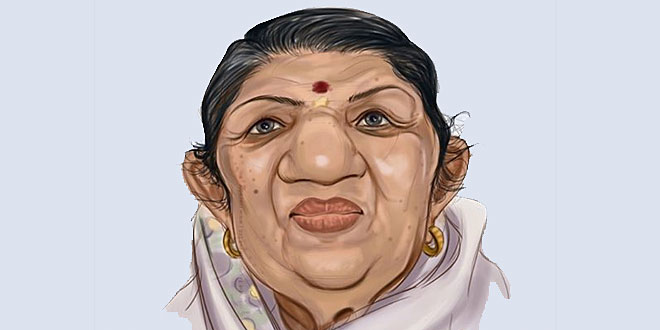
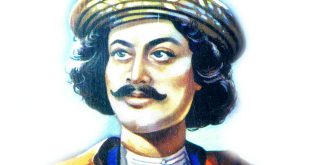
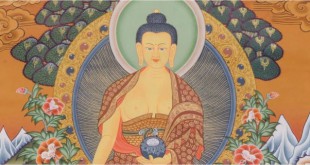
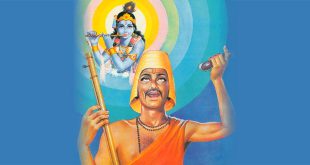




As young children, they were very close. As a child, Lata used to carry Asha all the time. They were so inseparable that when Lata went to school she would take Asha with her. One day the teacher protested and said that they cannot have two students on one fee. Lata refused to return to school without Asha and quit her studies.
By the way! The best essay writing service – https://www.easyessay.pro/
And Happy New Year!